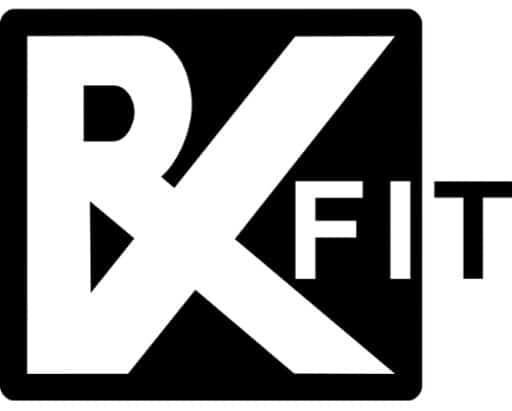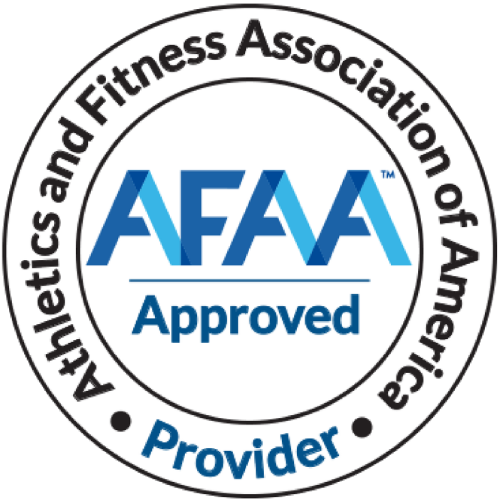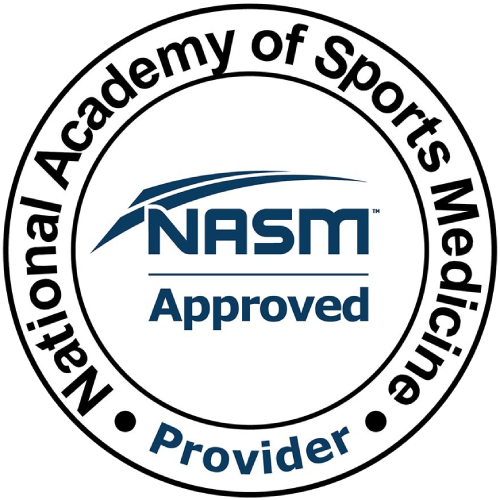You know that feeling when you conquer a challenging workout, and walk out of the gym feeling like a superhero? Well, that’s the power of the deadlift! The deadlift is the ultimate test of strength, engaging a multitude of muscles and promoting real-world functional strength.
Think about it. When you master the deadlift technique, you’re not just improving your powerlifting game; you’re also strengthening and targeting other muscle groups, like your core, your back, your glutes, and your grip strength. You’re not just sculpting muscles; you’re building a foundation of raw power that transcends the gym and can be applied to everyday life.
In this blog post, we’ll cover everything you need to know about how to improve your deadlift by practicing proper technique so you can increase your strength.
Understanding the Deadlift
Deadlifting is not just an exercise; it’s a training experience and a testament to your strength, willpower, and determination.
Anatomy and Muscles Involved
When you grip that bar and stand tall, you’re engaging your legs, from quads to hamstrings, glutes to calves. But that’s just the beginning.
Your back muscles, from the lower to the upper back, are called into action. They provide the stability and strength you need to conquer gravity. Meanwhile, your core, those abdominal and oblique muscles, act as the body’s fortress, keeping everything in check.
Last but not least, your grip strength is a fierce challenge. Don’t underestimate the importance of your forearms and hand muscles – they ensure that the bar doesn’t slip from your grasp.
Common Mistakes to Avoid
With that said, here are a few pitfalls that can stand in your way.
- Rounded Back: Allowing your back to round during a deadlift is a cardinal sin. It not only increases the risk of injury but also weakens your lift.
- Improper Foot Position: Your feet should be shoulder-width apart, with your toes pointing slightly outward. Neglecting this can throw off your balance and technique.
- Starting Too High: Ensure that you start with your hips lower than your shoulders. Failing to do this results in what’s known as a “squat-morning” – not a pretty sight.
- Neglecting Warm-Up: The deadlift is no joke. Neglecting a proper warm-up can lead to muscle strains and tears. Warm up adequately, or you’ll pay the price.
- Overlooking the Breath: The Valsalva maneuver, which involves taking a deep breath, holding it, and bracing your core, is essential for stability and power. Neglecting this can cost you precious strength.
Preparing for the Deadlift
Before you can learn how to increase deadlift you have to prepare to execute it effectively. But what comes with this preparation?
Warm-Up and Mobility Exercises
Before you even think about gripping that bar, your lower body muscles first need a warm-up. Remember, the warm-up isn’t just a formality; it’s the foundation for a successful deadlift. Neglect it at your own risk!
Start with dynamic stretches to awaken those dormant muscles. Leg swings, hip circles, and arm rotations will get the blood flowing. Follow this up by rolling your muscles out with a foam roller. This is great for the knots in your back, hamstrings, and glutes.
The deadlift is all about hip power. So, incorporate hip flexor stretches and hip hinge drills to ensure your hips are limber and ready for action. After this, you can begin your deadlift warm-up with lighter sets to groove your technique and gradually increase the weight.
Proper Gear and Equipment
Now, let’s talk about the tools of the trade. While the traditional deadlift itself is a primal exercise, the right gear can make a world of difference.
- Footwear: Invest in flat-soled shoes or deadlift slippers. They provide a stable base and minimize the risk of injury.
- Belt: A good lifting belt can offer lumbar support and help you maintain a neutral spine. Use it for heavy lifts, but don’t rely on it for every set.
- Chalk: Sweaty palms are the enemy of a solid grip. Chalk dries up that moisture, ensuring a tight hold on the bar.
- Straps and Lifting Hooks: These are helpful for grip if you’re lifting extremely heavy, but be cautious not to overuse them. You want to develop grip strength, too.
- Weight Lifting Gloves: Some folks prefer gloves for added comfort and to prevent calluses. Find what works best for you.
Remember, the gear is there to assist you in building optimal technique, not replace your body’s strength.
Perfecting Your Deadlift Form
Now that you’ve warmed up and geared up for the ultimate showdown with the deadlift, it’s time to dig deep into the very core of this magnificent exercise – form. You not only need to know how to improve deadlift, you need to know how to lift correctly.
Stance and Grip Techniques
Begin with your feet hip-width apart, toes pointing slightly outward. This width provides a stable base of support, ensuring you’re as grounded as an oak tree in a storm.
As you approach the bar, think about creating a magical triangle with your feet. The bar should bisect this triangle. This ensures your shins are right against the bar, reducing the distance they need to travel.
Last but not least, the grip is your lifeline to that bar. You have two options: the double overhand grip (both palms facing you) or the mixed grip (one palm facing you, one facing away). The mixed grip can help with grip strength on heavy lifts, but be mindful of muscle imbalances.
Body Positioning Tips
Perfecting your deadlift form is like mastering a martial art – it requires precision, practice, and patience. But once you’ve got it, you’ll have the power to move mountains, or at least some very heavy iron.
Hinge, Don’t Squat
Remember, this is a deadlift, not a squat. Your hips should move back as you lower your torso. It will almost feel like spreading your glutes. Keep your chest up and your back straight. Imagine trying to close a car door with your butt – that’s the hip hinge.
Engage Your Lats
Your lats are those powerful muscles on your back. Before you lift, tighten them like you’re trying to squeeze a pencil between your shoulder blades. Allow it to seem like your weights are parallel to your legs as you would with a close shave. This creates a stable platform for the bar.
The Big Breath
Take a big, deep breath before you lift. Hold it in, creating intra-abdominal pressure, and brace your core. This not only protects your spine but also boosts your power.
The Ascent
As you rise, think about driving your hips forward. Don’t jerk the body weight back up; it should be a smooth, controlled motion. Squeeze your glutes at the top for that extra flourish of power.
Strength Training Fundamentals
Strength training is a thrilling journey that transforms you both physically and mentally. It not only builds muscle it also unlocks your body’s potential.
Building a Solid Foundation
Before you even think about lifting heavy, ensure you have a firm grasp of the fundamental movements. Nail the proper technique for squats, lunges, and core stability exercises. This foundation will translate to an increased deadlift strength.
Rome wasn’t built in a day, and neither is a colossal deadlift. Begin with a manageable weight that allows you to perfect your form and to both build muscle mass and confidence. Rushing into heavy lifting is a recipe for injury.
It’s important to remember consistency is how to increase deadlift strength. Stick to your training plan and progressively increase the weight as your body adapts. The deadlift training program loves a committed enthusiast.
But also remember not to neglect accessory exercises like Romanian deadlifts, kettlebell swings, and bent-over rows. These will fortify the muscles used in the deadlift movement, ensuring your core strength is well-rounded.
Progression Strategies
Start with a weight you can lift comfortably for multiple sets and gradually add more weight each training session thereafter. As you get more comfortable, incorporate periodization into your training. This keeps your progress steady and sustainable by cycling through phases of higher volume, lighter weight, and lower volume, heavier weight. It prevents plateaus and keeps your body guessing.
As you get better at form and technique you will need to focus on every rep like it’s your last. Connect your mind with your muscles, ensuring they’re firing in harmony. Quality repetitions are more beneficial than sheer quantity, and be sure to regularly review your form.
Every so often, you need to give your body a break with a deload week. This requires you to lower the weight and reduce training volume and training intensity to allow for recovery and prevent burnout.
Working with a personal training team such as RxFit will allow you to start and progress seamlessly so you can reap the benefits without the risks.
Nutrition for Deadlift Gains
Nutrition for deadlift gains is the not-so-secret to taking your strength to the next level. Think of your body as a high-performance machine – it needs the right fuel to run optimally. With the right foods and supplements, you’ll not just be lifting weights you’ll be making a statement of power and resilience.
Fueling Your Body
To make the most of your strength training program, consider your nutrition carefully.
Protein, the Building Blocks
If your muscles were a house, protein would be the bricks. Ensure you’re getting an ample supply of this macronutrient to aid muscle recovery and growth. Lean meats, fish, eggs, and plant-based sources like legumes and tofu are your allies.
Complex Carbohydrates for Endurance
Deadlift strength requires a burst of energy. Complex carbohydrates like whole grains, sweet potatoes, and oats provide the sustained energy your muscles need.
Healthy Fats, the Unsung Heroes
Don’t shy away from fats. They play a crucial role in hormone production, and healthy fats like avocados, nuts, and olive oil keep your engine running smoothly.
Micronutrients for Support
Vitamins and minerals are necessary for strength training. Magnesium, for example, supports muscle mass, and muscle function, and zinc aids in recovery. Ensure your diet is rich in fruits and vegetables for these vital micronutrients.
Hydration, the Silent Partner
Water is critical for your workout. Staying hydrated ensures your muscles function optimally, and it helps prevent cramps and fatigue.
Recovery and Rest
You’ve conquered the deadlift, fueled your body with the right nutrition, and sculpted your physique into a masterpiece of strength. Something else that’s equally as important is recovery and rest.
Importance of Rest Days
Rest days are vital for muscle recovery, reducing injury risks, preventing burnout, and enhancing gym performance by allowing your body and mind to recharge. When you work out, you’re essentially breaking down muscle fibers. Overtraining can lead to mental and physical fatigue as well as increase the risk of injury from overuse.
Adequate rest allows your central nervous system to recover, ultimately enhancing your performance in the gym.
Recovery Techniques
Recovery techniques are essential for maximizing your fitness gains.
- Prioritize sleep, aiming for 7-9 hours per night to facilitate growth hormone release and body repair.
- On rest days, engage in light activities like walking, yoga, or swimming for improved blood flow and reduced muscle soreness.
- Incorporate foam rolling and stretching to enhance flexibility and prevent imbalances.
- Proper hydration and nutrition are crucial for muscle function and recovery; consider a post-workout protein shake.
- For serious athletes, massages or physical therapy can target specific muscle and joint issues, optimizing recovery and performance.
Variations and Assistance Exercises
Deadlift Variations and accessory exercises add flavor, excitement, and a dash of challenge to keep things interesting and effective. Whether you’re exploring different deadlift styles or fine-tuning your body with targeted exercises, these variations and assistance movements are your secret weapons.
Sumo Deadlift vs. Conventional Deadlift
Which is better? That’s a matter of personal preference and body mechanics and what your body weight affects. The best deadlift form for you is the one you can perform safely and effectively. Some lifters even incorporate both into their training programs to challenge different muscle groups and prevent plateaus.
The Conventional Deadlift requires you to stand with your feet hip-width apart, with your hands just outside your knees. It works for your entire posterior chain muscle groups and builds raw, functional deadlift strength.
The Sumo Deadlift on the other hand requires you to stand fit wide, with your hands inside your knees. The sumo deadlift targets the same muscle groups but in a different way. It places more emphasis on the quads and reduces the range of motion, making it a great choice for those with longer legs.
Deadlift Accessory Exercises for Improvement
- Romanian Deadlifts: These accessory exercises are fantastic for targeting the hamstrings and lower back. The movement involves keeping your legs relatively straight and hinging at the hips.
- Kettlebell Swings: Excellent for hip power and explosive strength, kettlebell swings closely mimic the hip hinge movement in the classic deadlift. They also offer a cardiovascular kick for those looking to torch some extra calories.
- Bent-Over Rows: Strengthen your upper back and grip with bent-over rows. This exercise complements your deadlift movement by reinforcing your lats, traps, and rhomboids.
- Pull-Ups/Chin-Ups: Developing strong back and shoulder blades is crucial for a solid deadlift. Pull-ups and chin-ups are the ultimate test of your upper body strength, and overhand grip and can greatly improve your deadlift performance.
- Single-Leg Exercises: Don’t forget about single-leg exercises like lunges and step-ups. They improve balance, and stability while correcting muscle imbalances, which is how to increase deadlift progress and deadlift strength.
- Core Work: A strong core is the pillar of your deadlift strength. Incorporate exercises like planks, cable crunches, and hanging leg raises to fortify your midsection.
Programming for Deadlift Success
With the right deadlift strength training program, and diligent tracking, you’re not just lifting weights; you’re on a journey of self-improvement and strength mastery. These tools will ensure you execute the perfect deadlift over time.
Reach out to RxFit to find convenient personal training sessions just for you!
Don’t be afraid to ask about tailoring a program to suit your needs while ensuring that you can increase the weight you lift over time while tracking your progress.
Tracking Your Progress
To achieve your fitness goals, keeping track of your progress is key.
- Maintain a training journal to record workout details, including weights, and how you felt during sessions, offering insights into your performance and areas for deadlift strength growth.
- Track performance metrics like deadlift weight lifted, sets, reps, and rest intervals to observe steady improvement over time.
- Video analysis of your lifts aids in refining form and technique as you compare your progress.
- Monitor your progress to help recognize when it’s time for a deload or extra recovery days. These are vital for long-term success and injury prevention.
- Seek feedback or hire a coach who can provide valuable outside perspectives for continued improvement.
Conclusion
As you venture forth on your deadlift journey, remember that every rep, every struggle, and every moment of perseverance is a step closer to greatness. You are not just building strength; you’re forging an unbreakable spirit, a mindset of resilience, and a body that defies limits.
Embrace the process, celebrate your progress, and keep your eyes on the horizon of your goals. Every lift, every workout intensity, every challenge, and every victory is a testament to your dedication and inner fortitude. If you’re ready to learn how to improve your deadlift, connect with us at RxFit today.


